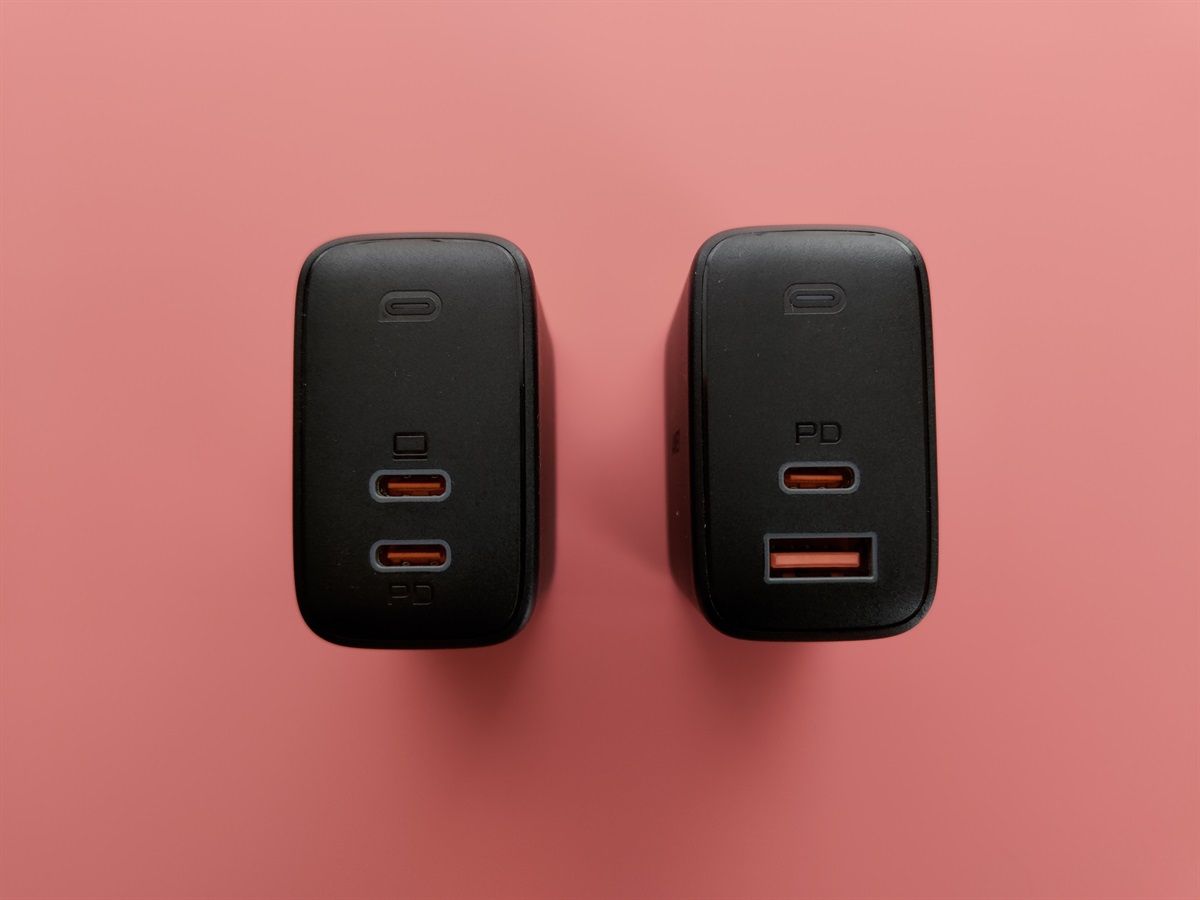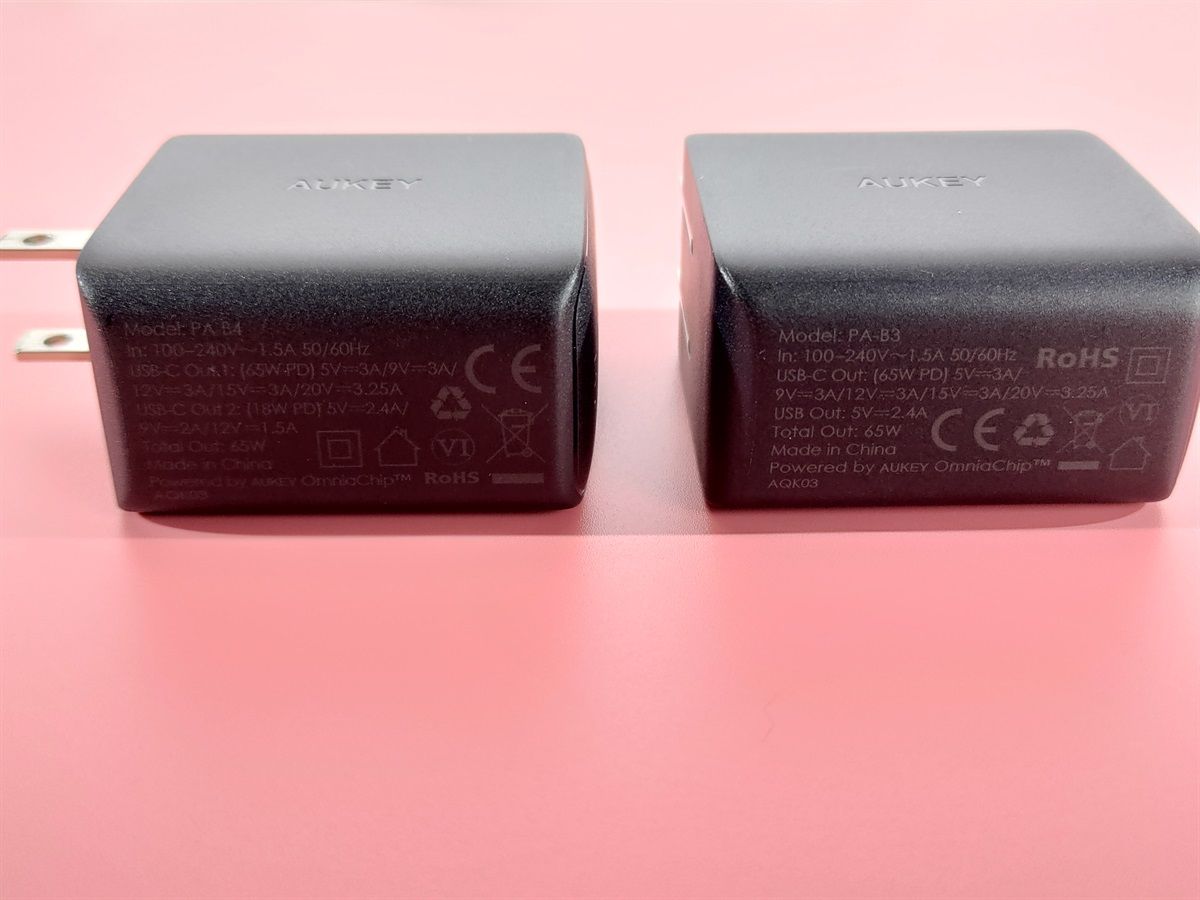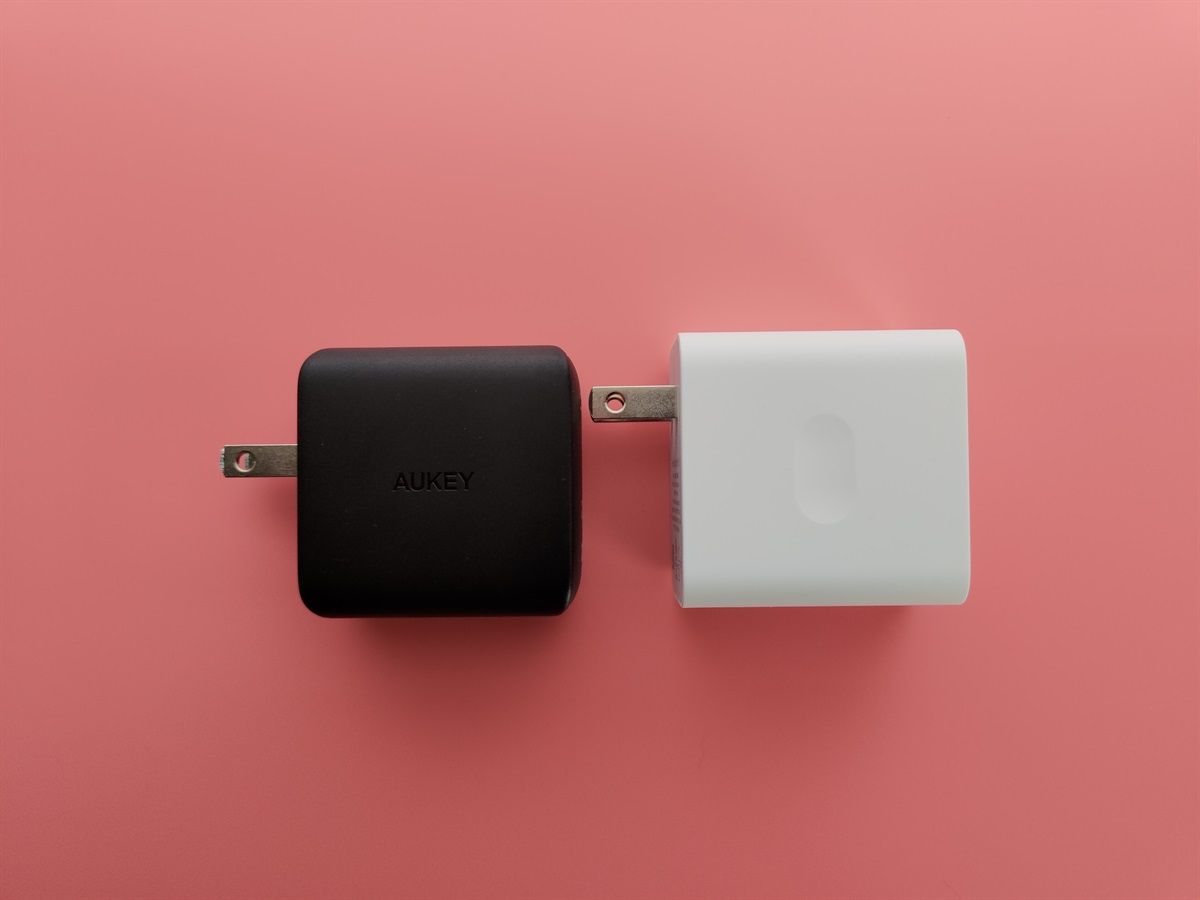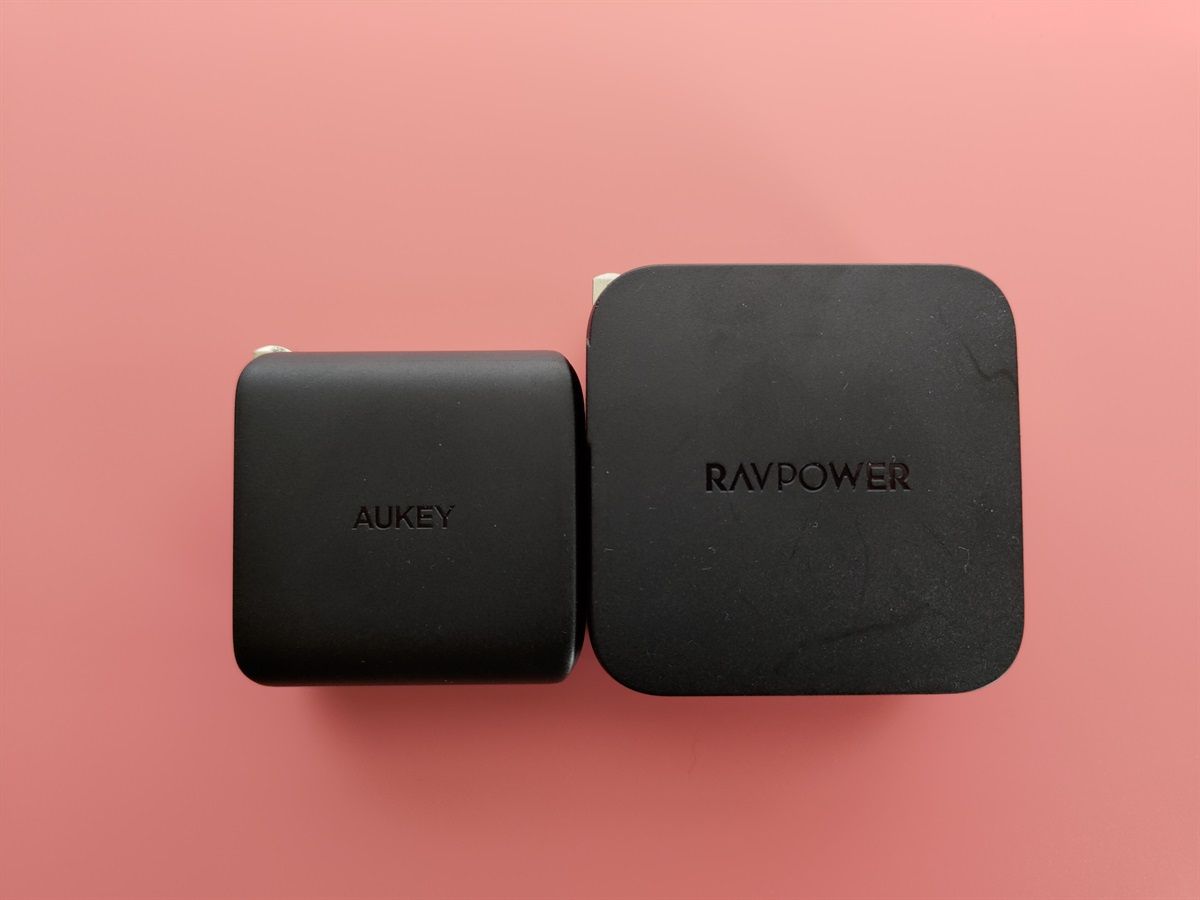Since COVID-19 took over our lives, many of us have become more reliant than ever on PCs and smartphones to stay connected. When you’re at home, there isn’t much of a need to run to a charger, but I’m sure some of you have a lot of devices to charge. Every device usually comes with its own charger, some of which are large bricks that take up way too much space. I personally have a lot of these to deal with, so I jumped at the chance to review the AUKEY Omnia Mix and AUKEY Omnia Duo, a pair of small and lightweight 65W Type-C chargers. I’ve been using these two chargers to power my smartphones, laptops, and other devices for the last few months, so here’s my brief review.
| AUKEY Omnia Mix Specifications | AUKEY Omnia Duo Specifications |
|---|---|
|
|
Disclaimer: AUKEY provided me the Omnia Mix and Omnia Duo chargers for review. However, the company did not have any input regarding the content of this review.
When the Omnia chargers were first unveiled at CES, AUKEY claimed they were the “world’s smallest PD [Power Delivery] chargers ever.” The chargers feature AUKEY’s OmniaChip, a gallium nitride-powered IC developed in collaboration with Navitas, a maker of GaN-based ICs. GaN can sustain higher voltages than silicon, allowing for currents to run through the device faster. Because of this, electronics using GaN are more power-efficient and can thus be made much smaller.
The Omnia Mix and Omnia Duo are both very compact, as expected. They’re identical in size and almost identical in weight. The main difference between the two is in port choice: The Omnia Duo has 2 USB Type-C ports while the Omnia Mix has 1 USB Type-C port and 1 USB Type-A port. The Duo’s top Type-C port supports up to 65W (20V/3.25A) Power Delivery fast charging while the bottom Type-C port supports up to 18W Power Delivery. The Mix’s top Type-C port also supports up to 65W Power Delivery while its bottom Type-A port supports 12W standard charging. If you’re using both ports to charge devices, then whatever is connected to the top Type-C port will top out at 45W (15V/3A) Power Delivery. AUKEY calls this feature Dynamic Detect, and it applies to both the Omnia Mix and Omnia Duo.



Left: AUKEY Omnia Duo (PA-B4). Right: AUKEY Omnia Mix (PA-B3).
Thanks to the compactness of these chargers, I’ve had no issues carrying them around in my bag or slotting them into an already crowded multiplug. I may not be traveling as much these days thanks to COVID-19, but I appreciate that these chargers have made it so easy for me to find a charging spot anywhere at home.
To get a sense of just how compact these two chargers are, here are a few photos showing the Omnia Duo side-by-side with OPPO’s 65W SuperVOOC 2.0 charger, OnePlus’ 30W Warp Charge 30T charger, and RAVPower’s 61W PD 3.0 Wall Charger. The OPPO and OnePlus chargers make use of proprietary charging tech from both companies, while the RAVPower is the company’s previous-generation Type-C charger made with silicon instead of GaN. That should give you a good idea of the improvements in size from using GaN.



Left: AUKEY Omnia Duo (PA-B4). Right: OPPO 65W SuperVOOC 2.0, OnePlus 30W Warp Charge 30T, and RAVPower 61W PD 3.0 wall chargers.
Since my most used devices all have Type-C ports, I’ve been able to swap my stock chargers in favor of the AUKEY Omnia Duo and Mix. That’s saved me a bit of room at the plug, and I’ve only had to sacrifice on charging speed for my smartphones. It takes about 2 hours and 40 minutes to fully charge the Nintendo Switch, 1 hour and 20 minutes to charge the Microsoft Surface Pro X, and 2 hours and 30 minutes to charge the OnePlus 7 Pro. For reference, Nintendo says it takes approximately 3 hours to fully charge the Nintendo Switch with the included charger, while the OnePlus 7 Pro fully charges in about 65-70 minutes with the Warp Charge 30T charger (based on our own testing.) The OnePlus 7 Pro supports 15W USB Type-C Power Delivery, which explains the extended charging time with the Omnia Mix/Duo. The Surface Pro X’s stock charger, however, delivers 65W of power, meaning the Omnia Mix/Duo serve as perfect replacements. In fact, I’ve stopped using Microsoft’s stock charger because of how much bulkier it is in comparison:

Top: HP Chromebook X2 charger. Bottom: Microsoft Surface Pro X charger.
…I’ve also stopped using my HP Chromebook X2’s stock charger for the same reason.
When GaN chargers first hit the market, they were a bit pricy. Fortunately, you can grab GaN chargers like the AUKEY Omnia series for much cheaper these days, and the price of GaN chargers will keep going down as manufacturing processes improve. Both chargers currently cost about $12-14 less than their MSRP, and I’ve seen deals that bring these prices down even further. I’m not going to recommend that you store away all your existing chargers and go buy these chargers immediately, but if you’re in the market for a new charger, then I can definitely recommend the AUKEY Omnia Duo and AUKEY Omnia Mix. They’re both very lightweight, compact, and offer very fast-charging for your Type-C devices.
| Pros | Cons |
|---|---|
|
|
Shop AUKEY Omnia Mix (PA-B3) on Amazon ||| Shop AUKEY Omnia Duo (PA-B4) on Amazon
This post contains Amazon affiliate links that may earn XDA a commission if you purchase any products that are linked.
The post AUKEY Omnia 65W Charger Review – For all your Type-C charging needs appeared first on xda-developers.
from xda-developers https://ift.tt/2DwHEny
via IFTTT

No comments:
Post a Comment